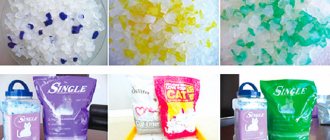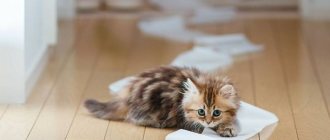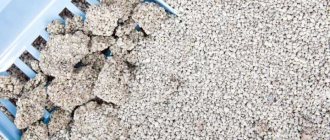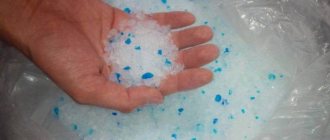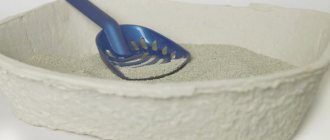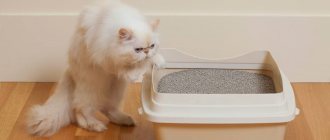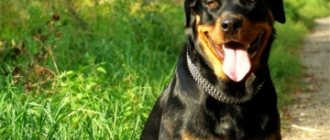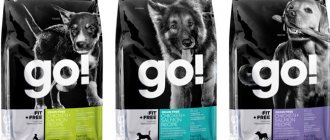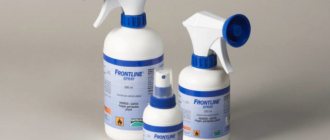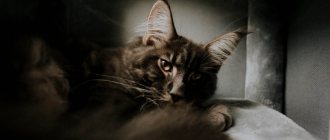If you have a cat in your home, it’s time to think about creating the right conditions for keeping it. In addition to food and a place to sleep, your pet needs a toilet. In apartments and houses, special trays with fillers are successfully used to solve the issue of hygiene and maintain cleanliness in the living space. The store offers a large selection of these compounds, distinguished by different criteria.
In this article we will look at how to choose the right litter for a cat litter box, a description of litter options, their positive and negative sides.
Which cat litter is best to choose?
In earlier times, boxes and other containers filled with sand or paper were used to create a litter box for a domestic cat. However, these compounds did not cope with their task very successfully, required constant replacement and spread the unpleasant smell of cat urine.
To eliminate all the disadvantages of the available “filler”, manufacturers of pet products began to produce special formulations that imitate the natural environment. Artificial litters are well accepted by cats and effectively absorb the smell of feces, keeping the house clean and hygienic.
The assortment includes different types of fillers. Let's take a closer look and determine which composition is best to choose for the cat's litter box.
Production technology
The production of cat litter itself includes the following technological steps:
- Preliminary drying of raw materials, which is then sent for crushing.
- Additional drying. At the exit, the raw material should have a moisture content of no more than 8-12%.
- Subsequent crushing of chips using a hammer crusher.
- Moistening the resulting raw material with steam (for its subsequent better gluing).
- Pressing into molds and cooling of granules.
- Sifting and packaging of finished products. By the way, bags for fillers can also be produced independently, since the cost of this process is low.
Absorbent cat litter
The absorbent mineral filler does not change its structure after use and quickly absorbs liquid. Made from natural raw materials that are safe for animals. The composition may include sawdust, corn, pulp and special types of clay. To improve the characteristics of the filler, some manufacturers add activated carbon, soda or silver ions to the base composition.
Popular types of absorbent filler:
- FRESH STEP triple odor protection;
- HOMECAT without additives;
- Tail;
- Zoonic;
- Barsik effect/standard/alpine freshness, etc.
pros
Absorbent litter for the tray has its advantages.
Pros:
- absorbs odor well;
- does not require regular replacement;
- affordable price.
This composition is chosen by owners who have several cats in the house.
Minuses
You can replace the litter once every 7-10 days, but some cats refuse to go to the toilet again, even if the litter is only partially soiled. No obvious deficiencies in the composition were identified.
Price
The price of fillers varies widely and depends mainly on the material used and the production technology used by the manufacturer.
The cheapest fillers are made from sawdust, paper and grain industry waste.
Mineral fillers belong to the middle price category - they are made from natural minerals and their mixtures.
The most expensive and modern ones are silica gel fillers. Silica gel is a mineral synthetic sorbent obtained by the interaction of sodium silicate (liquid glass) and sulfuric acid.
The most famous and popular fillers in the domestic market are the following brands : “Pretty Cat”, “Barsik”, “Kotyara”, “Kuzya”, “Zoonik”, “Siberian Cat”, “Pi-Pi-Bent”, “Brava” Clean Paws”, “C.C. Cat” and others.
Popular imported ones : “Catsan”, “Cat's Best”, “Cats Choice”, “Silicat”, “Super Cat”, “Fresh step”, “Kat Step”, “CleanyKat”, “Ever Clean”, “Ultra Lite” and etc.
Clumping filler
Clumping litter is the most popular granular composition made from a clay material with excellent moisture absorption properties. The main composition may include wood, paper, various fragrances and some substances that change the color of the granules after contact with urine.
Popular brands of clumping litter:
- HOMECAT standard, ecoline, etc.;
- NEO LOO LIFE (waste can be flushed down the drain);
- CAT'S BEST SMART PELLETS (clumping wood composition).
pros
Let's look at the advantages of clumping cat litter.
Advantages of the composition:
- absorbs the unpleasant odor of feces well;
- environmentally friendly material is absolutely safe for cats;
- can be used for small kittens;
- convenient cleaning with economical consumption of granules.
Minuses
Disadvantages: Requires daily cleaning of the tray. After going to the cat's toilet, the owner needs to remove the crumpled granules with a special spatula. If you don't do this cleaning, she will spread wet, crumpled granules around the house with her paws.
Not suitable for owners with several cats in the house.
The best litter for Maine Coon
Maine Coon cats are the largest domestic cats in the world, therefore, they excrete the most urine of all cats in the world, therefore, they need the best litter in the world - silica gel.
But seriously, a Maine Coon cat, except for its size, is not fundamentally different from its smaller brothers and all of the above applies to it as well.
For a kitten of this breed, it is better to use natural fillers made of wood, paper or corn. It’s good if the owner takes some of the used litter from the breeder and puts it in the kitten’s tray, so he will quickly understand where his new litter box is now.
In the future, you can use any filler at the discretion of the owner and with the approval of the Maine Coon himself.
Wood filler
Wood filler is created from sawdust compressed into pellets. The contents of the tray can be flushed down the drain. Environmentally friendly composition for animals.
Popular brands of wood filler:
- CAT'S BEST ORIGINAL/ SMART PELLETS / UNIVERSAL;
- HAPPY PET;
- HOMECAT standard/green tea, etc.;
- Tail;
- NEO LOO LIFE.
pros
Let's look at the advantages of wood fillers.
Advantages of the composition:
- ecological natural material;
- well accepted by cats;
- suitable for small kittens;
- complete replacement of the filler – once every 5-7 days;
- can be flushed down the drain.
Minuses
Disadvantages:
- small particles can be carried throughout the house;
- does not absorb urine odor particularly effectively;
- Daily cleaning of the tray is required.
Sales, certification issues, etc.
The main advantage of the production of fillers is the fact that there is no need to rent a large premises. In principle, all equipment for the production of cat litter can easily be placed on 50 square meters. There is also no need for any special storage conditions.
As we already noted at the very beginning of the article, products of this type are not subject to mandatory certification. It can be sold both in specialized pet stores and in retail outlets selling everyday goods. If we talk about wholesale prices, then on average they are 15 rubles per kg.
Silica gel filler
Silica gel cat litter is made from a natural component - silica, processed using special technology. A product with zero humidity and a highly porous structure effectively absorbs large volumes of liquid.
Popular brands of silica gel filler:
- FRESH STEP CRYSTALS;
- FLAMINGO SILICA CAT LITTER;
- MIMI LITTER;
- CC Cat;
- Khvostun et al.
pros
Silica gel composition is the most expensive, but at the same time very economical. The filler in the tray is replaced 1-2 times a month. There are other advantages of this filler.
Advantages:
- safe environmentally friendly composition;
- quickly absorbs moisture;
- effectively blocks the unpleasant odor of urine;
- pathogenic bacteria do not multiply in this filler;
- does not spread throughout the house.
Minuses
There are also some disadvantages of silica gel filler. These include the crunchy sound of the granules, which can scare away the cat, and a fairly high price.
Why do you need filler, how to use it
Litters are designed to satisfy the need of cats to go to the toilet on a loose and absorbent surface, and then bury their business so that there is no cat odor. By the way, on this issue people and animals are united. Both cats and their owners try to eliminate sources of unpleasant odors, but everyone does this to the best of their ability.
The need to bury traces of their life is inherent in cats by nature.
The cat can only bury it or wait until they clean up after it. If the toilet is dirty and smells bad, it will find another place where it is still clean and well absorbed, for example, on the carpet or sofa. A person can not only clean up after a cat and keep the whole house clean, but also bring good litter from the store, which will become the third “fighter” against cat litter odors.
Filler granules absorb liquid and trap odors in their pores
Almost any litter is poured into the tray in a layer of at least 3 cm. Accordingly, the sides of the cat litter should be high, or even better, buy a tray in the form of a house with a roof and a hole. Then, burying and disguising its secrets, the four-legged fluffy will not scatter filler granules across the floor.
How long a pack of litter will last, how well it absorbs and eliminates odors, whether it sticks to the paws - all this depends on the brand you choose and the physiological characteristics of the cat. As a pet grows up, it eats more, the toilet experiences different loads, and smells also change. At the same time, new brands appear in stores. Therefore, be prepared to constantly search for the best filler.
Video: about new generation fillers (silica gel)
What other types of fillers are there?
The range of pet products also includes other types of cat litter. Let's look at them.
Types of fillers:
- Mineral – consists of granular minerals with a porous structure. The natural composition absorbs odors and liquid well. Consumption is economical. You can remove spoiled granules using a special spatula. Among the disadvantages: it cannot be washed down the drain; it can emit an unpleasant odor if wet lumps are not removed for a long time.
- Corn is a hypoallergenic composition that has a similar structure to wood filler. Can be used for small kittens. Allowed to be flushed down the drain. Excellent odor neutralization and water absorption. Among the disadvantages: sawdust can be carried around the apartment on the cat’s paws.
- Clay - small granules from certain types of clay, resembling sand in shape. Pros: economical consumption, convenient removal of lumps using a spatula. Disadvantages: the composition is quite dusty, remains on the animal’s paws, cannot be flushed down the toilet.
The best option for cats is a litter with a good structure that does not injure the paws or pollute the fur. The composition should have a natural odor, not contain toxic or allergenic elements and not create unnecessary garbage in the apartment.
Comparative table of fillers of different brands and types
| Brand | Filler type | Filler material | Antibacterial | Holds odor | Price from |
| Fresh Step | Absorbent | Clay | Yes | Yes | RUR 350/3.2 kg |
| Silica gel | Yes | Yes | RUB 1,288/3.6 kg | ||
| clumping | Clay, activated carbon, plant extracts | Yes | Yes | RUR 775/6.35 kg | |
| Catsan | Absorbent | Sand and chalk | Yes | Yes | 460 rub./5 l |
| clumping | Clay | Yes | Yes | 634 RUR/5 l | |
| Ever Clean | Absorbent | Clay, flavor | Yes | Yes | 1298 rub./10 l |
| clumping | Clay, activated carbon, flavor | Yes | Yes | RUR 732/6 l | |
| Cats Best | Absorbent | Wood fibers | No, biodegradable | Yes | RUR 381/7 l |
| clumping | Wood and corn cob fibers, binding elements | No, biodegradable | Yes | 430 RUR/5 l | |
| Pi-Pi-Bent | Crumbling | Bentonite clay | Yes | Yes | RUR 229/5 kg |
| Bentonite clay, flavoring | Yes | Yes | RUR 270/5 kg | ||
| Siberian cat | Absorbent | Coniferous sawdust | Yes | Yes | 130 rub./5 l |
| Siliceous finely porous opoka rock | No | Yes | 150 rub./5 l | ||
| Silica gel | Yes | Yes | 330 rub./4 l | ||
| clumping | Clay | Yes | Yes | 197 RUR/5 l | |
| Zoonic | Absorbent | Coniferous shavings | Yes | Yes | RUR 119/5 kg |
| Silica gel | Yes | Yes | 289 RUR/3.8 l | ||
| clumping | Environmentally friendly bentonite | Yes | Yes | 190 rub./5 l | |
| Pussy Cat | Absorbent | Mineral zeolite, flavoring | Yes | Yes | 89 rub./4.5 l |
| clumping | Ural bentonite clay | No, biodegradable | Yes | 89 rub./4.5 l | |
| Barsik | Absorbent | Clay | Yes | No | 67 RUR/4.5 l |
| Wood sawdust | No, biodegradable | Yes | 110 rub./4.5 l | ||
| Silica gel | No | Yes | 120 rub./4.5 l | ||
| clumping | Clay | Yes | Yes | 149 RUR/4.5 l |
The information for compiling the table was taken from the YandexMarket resource. Unfortunately, it is impossible to consider the entire range of brands existing today. In addition to classic fillers, almost every manufacturer produces universal ones for all pets and kittens, elite ones for picky cats, special ones for long-haired cats, etc. Each one contains individual additives and differs in the size and shape of the granules. All biodegradable litters can be composted (recycled into fertilizer) or flushed down the toilet after use.
pros
Certain types of cat litter must be selected for each cat individually, depending on the character, behavioral characteristics, nutrition and health of the pet. Each type has its own positive qualities.
Clay ones are highly economical - at a low price, they have the unique ability to absorb moisture and neutralize unpleasant odors, which means less product is spent. They can be used for the smallest cats without the risk of allergies or poisoning.
Mineral “sands” retain moisture and odors longer, so the entire tray can be changed once a week or a week and a half. A large package will last a long time.
Sawdust is one of the safest beddings for both the cat and the cat owner. Sawdust does not get clogged between the cat's paw pads. Organic origin and inexpensive price, combined with optimal odor absorption, make it one of the leaders.
Where should I put the used filler?
It is not possible to recycle the filler everywhere. Basically, waste is thrown either into the toilet or into the trash bin. Since there is no special place for used granules, these will do for now.
Of course, there is nothing easier than picking up a lump with a scoop and flushing it down the toilet. However, it is worth remembering that only wood type products can be disposed of in the toilet. Disposal is carried out slowly and washed off in small portions, which will avoid clogging in the pipe.
Clay-based litter should only be thrown into a bucket. When a clay granule gets into water, it will swell greatly, so after throwing away the contents of such a tray, you can safely call a plumber. Very soon the sewer pipe will become clogged.
By throwing the contents of the tray into a bucket, you cannot avoid the appearance of an unpleasant odor in the apartment, which will quickly spread from the used granules. It is best to place the contents of the pot in a bag and tie it.
It is not recommended to leave this package even for a short time near the front door. The cat, sensing a familiar aroma, will decide that this place is its new toilet. It will be extremely difficult to wean an animal from this nuisance.
